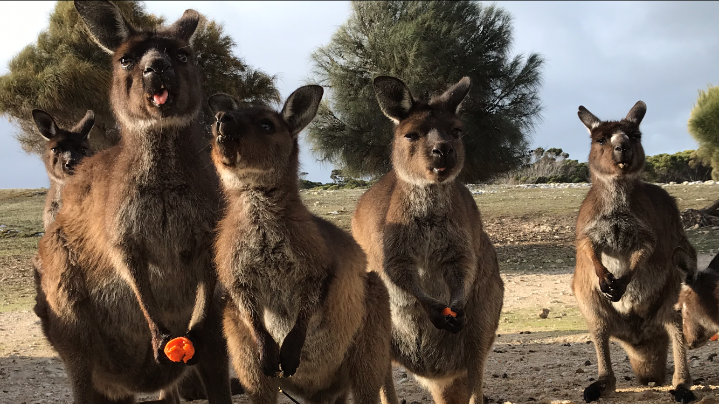
The South Australian Parliament will soon conduct an Inquiry into Kangaroo and Wallaby management in our state. The RSPCA supports the Inquiry and hopes it will highlight the animal welfare problems inherent to the current management system and identify changes to improve animal welfare.
The kangaroo and wallaby Inquiry is an important opportunity for wildlife carers and the community to document your experiences with these animals, your views about their value and how you would like to see them managed.
Here are some of RSPCA’s key concerns about how kangaroos and wallabies are managed in SA that you may like to include in your submission:
1. Current Management Practices Are Inadequate
South Australia currently manages kangaroos and wallabies merely as “pests” or “harvestable resources.” Instead, these animals should only be managed to mitigate negative impacts, such as serious welfare issues or significant damage, and only when there is evidence to support these actions. Furthermore, non-lethal methods should be prioritised as the first option for mitigating any negative impacts.
2. Community Valuation Overlooked
Kangaroos and wallabies are highly valued by the community and should not be treated solely as “harvestable resources” under the government’s policy. This policy fails to reflect the community’s views and must be revised to better align with public sentiment.
3. Undermining Intrinsic Worth
Managing kangaroos and wallabies exclusively as “pests” under the Non-Commercial Kangaroo Shooting Code or as “harvestable resources” under the Commercial Kangaroo Shooting Code undermines their intrinsic value. This approach predisposes these animals to inhumane treatment and fails to recognise their inherent worth.
4. Lack of Compliance Monitoring
There is currently no compliance monitoring of shooting activities on the ground within either the non-commercial or commercial shooting systems. As a result, serious welfare issues often go undetected, including:
- Orphaned, dependent joeys escaping shooters and starving
- Shooters failing to humanely kill both furred and unfurred pouch young
- Injured kangaroos escaping and dying slowly
- The questionable humaneness of certain killing methods allowed under shooting codes, such as blunt force trauma, decapitation, and cervical dislocation
5. Inconsistent Shooting Programs
Even when shooting is justified, it is highly problematic that two different shooting programs exist-Commercial and Non-Commercial-each with varying standards for justification and animal welfare. This inconsistency complicates the enforcement of humane practices.
6. Ecological Role Underappreciated
Kangaroos play a crucial role in the ecosystem by aiding in the regeneration of native plants. However, this important ecological contribution is not adequately acknowledged in current management plans, leading to incomplete and ineffective conservation strategies.
7. Inadequate Data Collection
The current management system lacks accurate data on several critical aspects, including:
- The total number of kangaroos killed
- The number of orphan joeys killed and the methods used
- The number of injured kangaroos that escape after being shot
- This deficiency in data hampers the ability to assess and improve management practices effectively.
The Terms of Reference (T.O.R.) for this Inquiry will shortly be published on the SA Parliamentary site (please watch this site for details: , then go to ‘Committees details’ to find the name of the Inquiry or the committee running it (likely to be the Natural Resources Committee).

How to make a submission to an SA Parliamentary Inquiry:
Locate the Inquiry Advertisement
1. Visit the Parliamentary Website: Go to the homepage of the Parliamentary website. Find the Inquiry Ad and look for the advertisement related to the Inquiry. Review Key Details and understand the subject matter while familiarising yourself with the scope and focus. Note the deadline for submission.
2. Prepare Your Submission Document: Use a Word document or PDF for your submission. Select a readable font like Arial or Times New Roman.
- Include Header Information
- Address To: Specify the Committee’s name.
- Inquiry Name: Clearly state the name of the Inquiry.
- Your Details: Provide your name, organization (if applicable), address, and phone number.
- Qualifications: Mention any relevant qualifications.








